Mike Phillips
Active member
- Dec 5, 2022
- 51,004
- 7
For Use with Rotary Buffer Only - Read the Directions
A common question I get asked via e-mail, a thread posted to the forum, a question posted to one of our YouTube videos or PM and also on my Facebook page will go like this,
Usually the first thing I'll ask the person what they are using, as in, what
There’s always a segment of these queries where the person is using a dual action polisher with foam pads, so they're good to go in this area but they're using products that are intended for, formulated for and designed for use with a rotary buffer.
Now I'm not a chemist and never claim to be but I like to give reputable manufactures the benefit of the doubt when they state right on the labels of their products what type of tool the product is recommended to be used with.
There are a lot of different types of abrasive technology on the market and some of this abrasive technology is intended specifically to be used with a rotary buffer and almost always in the refinishing industry.
The normal tool used in the refinishing industry is the rotary buffer. After cars are painted, IF they are go be sanded, after sanding a rotary buffer is used with a compound, polish and sometimes even a glaze to buff the paint before the car is returned to the customer.
This almost always leaves holograms in the paint but that's how this industry operates. Most "customers" don't know the difference between swirls and squirrels so for most body shop it's not an issue.
Big picture is this...
Products designed for use with rotary buffers and targeted at the refinishing industry doesn't mean the same products when used with any type of dual action polisher will create a customer pleasing finish no matter what pad is used nor the skill of the person doing the work.
The reason why is because it's the wrong abrasive technology for a tool that rotates and oscillates and the results when a person uses the wrong abrasive technology looks like this...
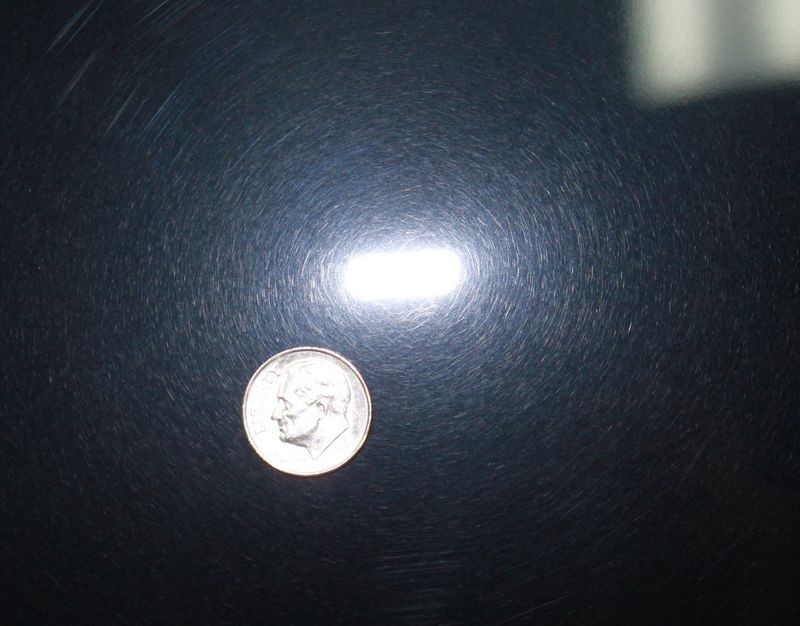
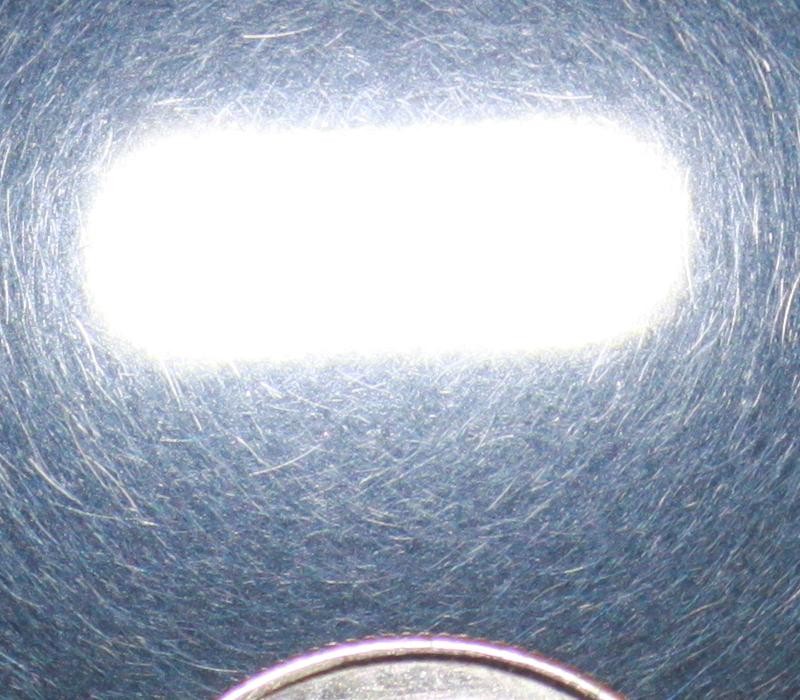
Holograms from a Dual Action Polisher?
Sometimes a person will describe the above DA Haze as holograms when referring to how the paint they just buffed looks.
While you can leave DA Haze trails or Patterns in a panel that follow the path the buffer was moved over the paint, these are not the same as the cuts in the paint called holograms left by the use of a rotary buffer.
In the last few weeks this topic has come up a number of times and in each case the person having problems leaving a haze-free finish is using a compound or polish that is not only intended for use with a rotary buffer but the label on the product actually states this little tidbit.
As we all know... us guys never read the directions to anything and so it goes with compounds and polishes. So when these questions are posted the various media touch points and specifically when I'm asked these types of questions, the first thing I do is ask the person, what are you using? What,
And when the tools is a dual action polisher, 9 times out of 10 the problem is the person. That is the person is using the wrong product.
You see, the products work great when used the right way, but when used the wrong way... well what do you expect?
So as my norm, when a topic continues to come up over and over again, I'll do my best to write an article to address the issue and then in the future, (as I always type for the future on forums), when the topic comes up, instead of typing out a reply explaining all of the above I can just post the link to the article that explains it.
Because a good picture can speak a thousand words, below are a few products we carry at Autogeek that are GREAT products. That is they are great products when used correctly with the right TOOL. Used in-correctly doesn't make them bad products, it usually means the person having the problems didn't read the directions.
Professional Line
The products show below are of products that are part of a company's offering to the refinishing industry. Refinishing industry in simple terms means body shops, the place you would take your car to have it painted after an accident or to get a custom paint job in the case of someone fixing up an older car. Most companies in the car appearance industry that offer a professional line also offer a consumer line. If you look at the directions for the products in their consumer line you'll find they are often a lot more versatile in that they can be used by hand, dual action polishers and rotary buffers.
In the below pictures, the first picture will be of a product followed by a second picture of the directions on how to use the product.
Note that when a product label states to use a buffer at a specific RPM even if the term BUFFER is kind of vague, the reference to RPMs and in the context of what the product is and the market it is formulated and targeted at means the term BUFFER is being used to describe a rotary buffer.




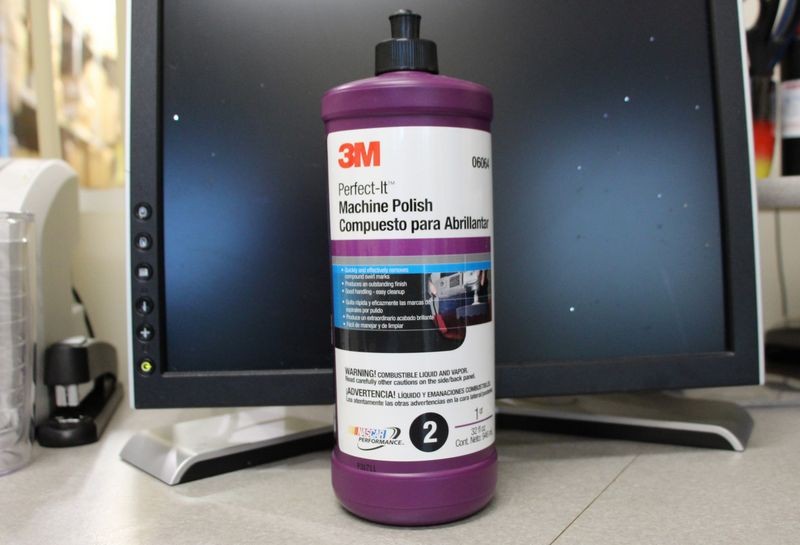


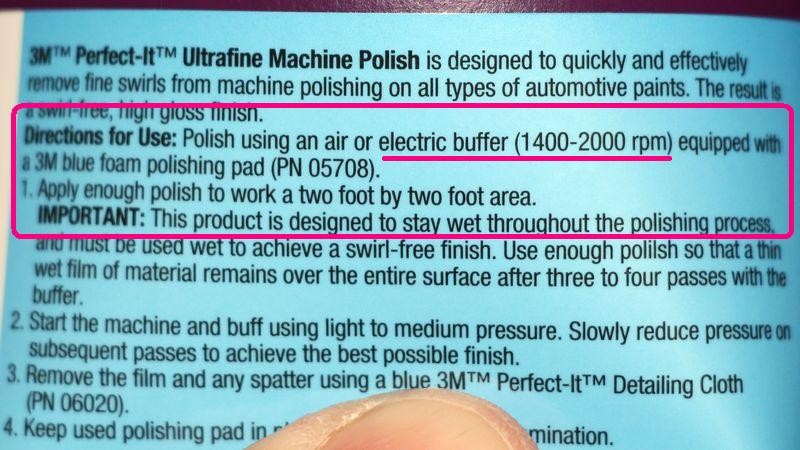
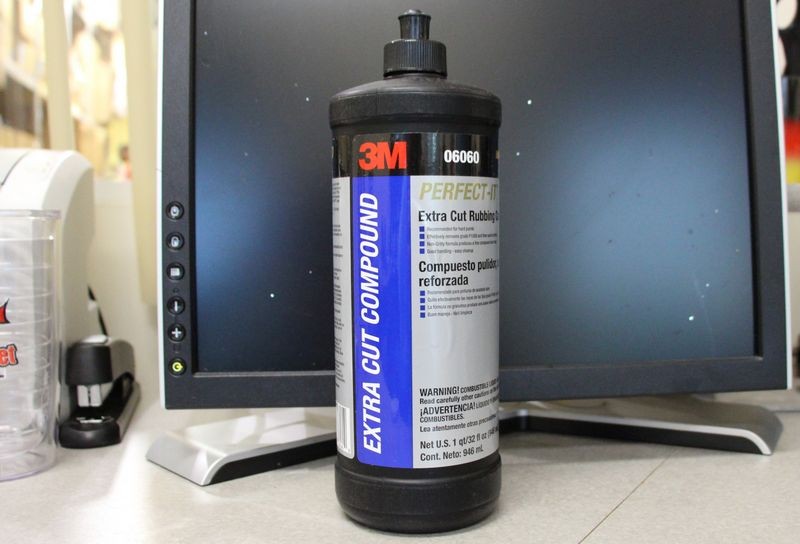

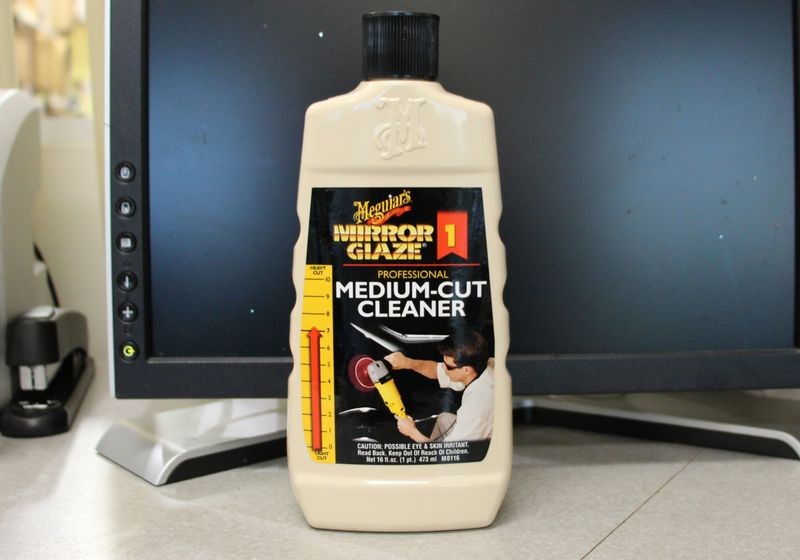


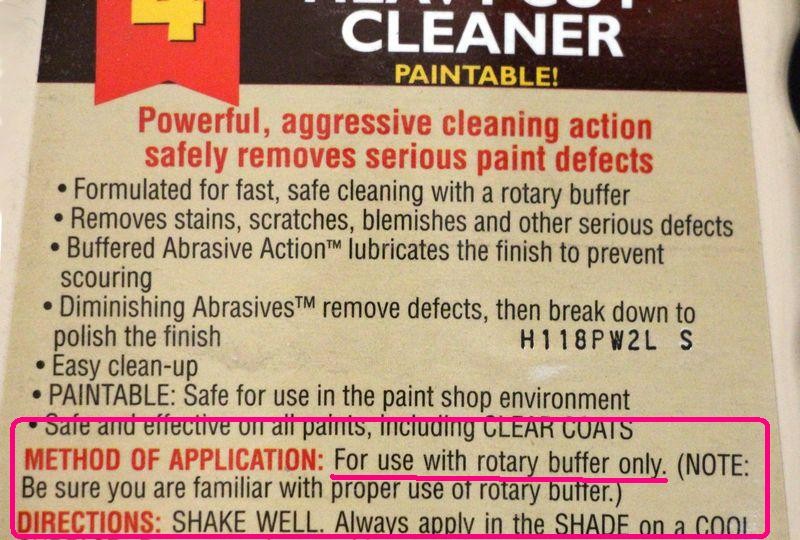
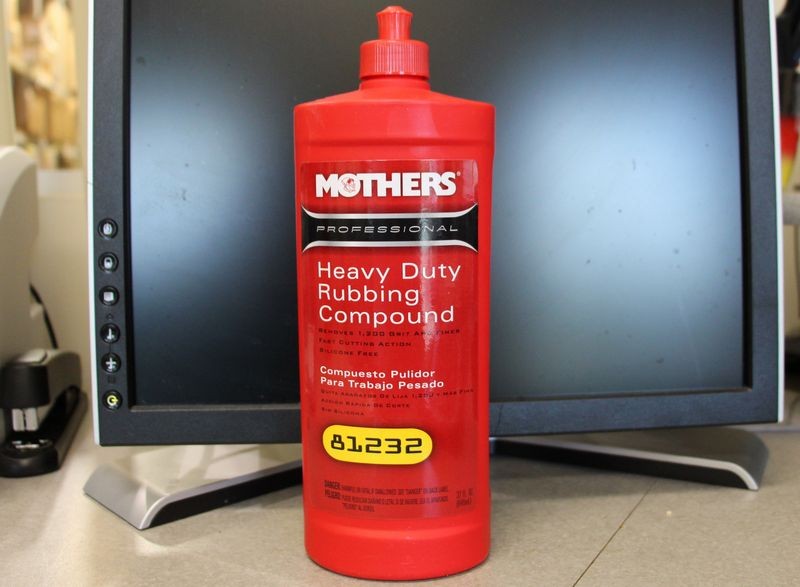



A common question I get asked via e-mail, a thread posted to the forum, a question posted to one of our YouTube videos or PM and also on my Facebook page will go like this,
Hi Mike,
I've read a lot of articles and watched a lot of videos but I'm still getting holograms or haze left in the paint, especially on darker colored cars? What am I doing wrong?
I've read a lot of articles and watched a lot of videos but I'm still getting holograms or haze left in the paint, especially on darker colored cars? What am I doing wrong?
Usually the first thing I'll ask the person what they are using, as in, what
- Tools
- Pads
- Products
There’s always a segment of these queries where the person is using a dual action polisher with foam pads, so they're good to go in this area but they're using products that are intended for, formulated for and designed for use with a rotary buffer.
Now I'm not a chemist and never claim to be but I like to give reputable manufactures the benefit of the doubt when they state right on the labels of their products what type of tool the product is recommended to be used with.
There are a lot of different types of abrasive technology on the market and some of this abrasive technology is intended specifically to be used with a rotary buffer and almost always in the refinishing industry.
The normal tool used in the refinishing industry is the rotary buffer. After cars are painted, IF they are go be sanded, after sanding a rotary buffer is used with a compound, polish and sometimes even a glaze to buff the paint before the car is returned to the customer.
This almost always leaves holograms in the paint but that's how this industry operates. Most "customers" don't know the difference between swirls and squirrels so for most body shop it's not an issue.
Big picture is this...
Products designed for use with rotary buffers and targeted at the refinishing industry doesn't mean the same products when used with any type of dual action polisher will create a customer pleasing finish no matter what pad is used nor the skill of the person doing the work.
The reason why is because it's the wrong abrasive technology for a tool that rotates and oscillates and the results when a person uses the wrong abrasive technology looks like this...


Holograms from a Dual Action Polisher?
Sometimes a person will describe the above DA Haze as holograms when referring to how the paint they just buffed looks.
While you can leave DA Haze trails or Patterns in a panel that follow the path the buffer was moved over the paint, these are not the same as the cuts in the paint called holograms left by the use of a rotary buffer.
In the last few weeks this topic has come up a number of times and in each case the person having problems leaving a haze-free finish is using a compound or polish that is not only intended for use with a rotary buffer but the label on the product actually states this little tidbit.
As we all know... us guys never read the directions to anything and so it goes with compounds and polishes. So when these questions are posted the various media touch points and specifically when I'm asked these types of questions, the first thing I do is ask the person, what are you using? What,
- Tool
- Pad
- Product
And when the tools is a dual action polisher, 9 times out of 10 the problem is the person. That is the person is using the wrong product.
You see, the products work great when used the right way, but when used the wrong way... well what do you expect?
So as my norm, when a topic continues to come up over and over again, I'll do my best to write an article to address the issue and then in the future, (as I always type for the future on forums), when the topic comes up, instead of typing out a reply explaining all of the above I can just post the link to the article that explains it.
Because a good picture can speak a thousand words, below are a few products we carry at Autogeek that are GREAT products. That is they are great products when used correctly with the right TOOL. Used in-correctly doesn't make them bad products, it usually means the person having the problems didn't read the directions.
Professional Line
The products show below are of products that are part of a company's offering to the refinishing industry. Refinishing industry in simple terms means body shops, the place you would take your car to have it painted after an accident or to get a custom paint job in the case of someone fixing up an older car. Most companies in the car appearance industry that offer a professional line also offer a consumer line. If you look at the directions for the products in their consumer line you'll find they are often a lot more versatile in that they can be used by hand, dual action polishers and rotary buffers.
In the below pictures, the first picture will be of a product followed by a second picture of the directions on how to use the product.
Note that when a product label states to use a buffer at a specific RPM even if the term BUFFER is kind of vague, the reference to RPMs and in the context of what the product is and the market it is formulated and targeted at means the term BUFFER is being used to describe a rotary buffer.



















